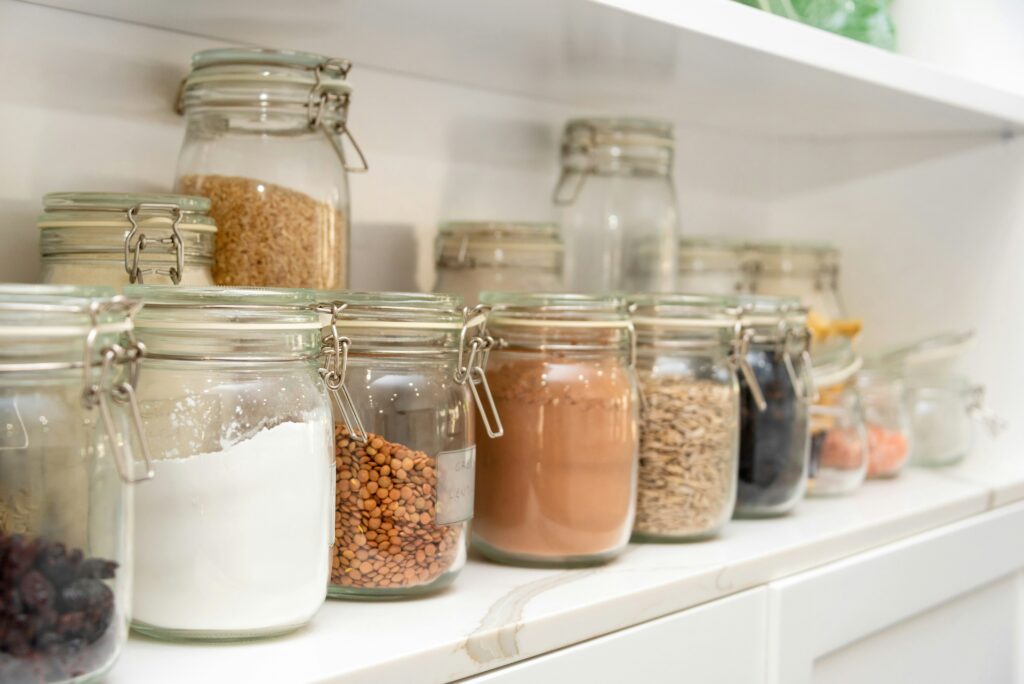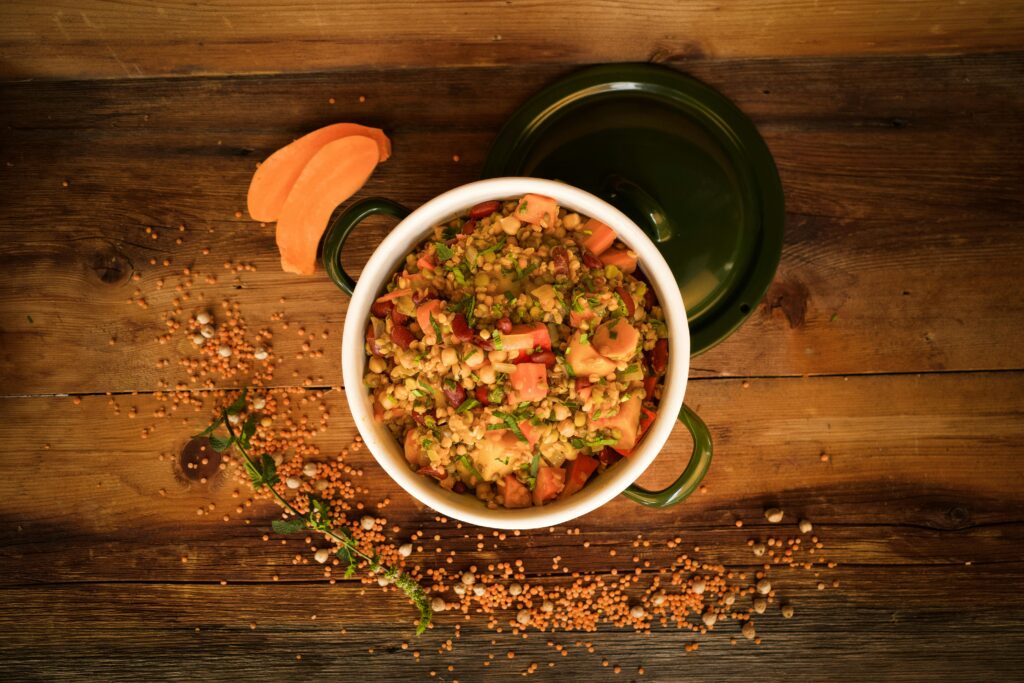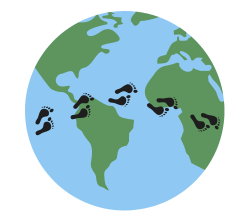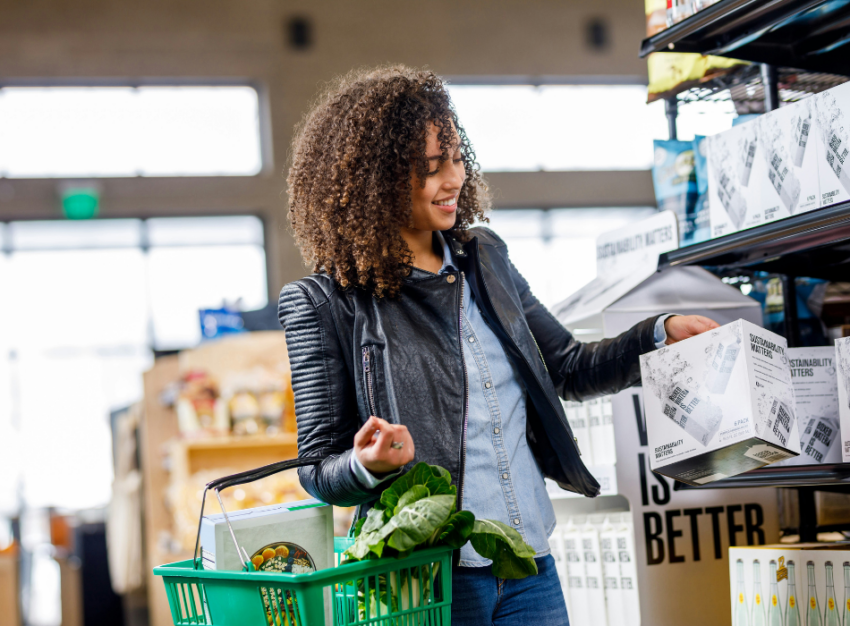There are lots of stereotypes around cooking for one person: that you end up eating the same meal many nights in a row, that you eat lots of takeout because you can’t be bothered to cook, that ingredients are constantly going bad on you …
I’ve been grocery shopping and cooking for myself for my whole adult life. While those stereotypes are somewhat true, there are ways to eat a varied diet as a single person without having food go bad.
Follow these tips to liven up your diet, prevent food waste and save money while you’re at it!
Plan ahead
When you’re cooking for one person, it’s essential to plan ahead. This prevents you from ending up with random ingredients at the back of your fridge that you’re not sure what to do with.
Develop a meal plan for the coming week (learn more about meal planning here). Make a grocery list based on your meal plan, so that you get exactly what you need. Be sure to check your cupboards before shopping to avoid doubling up on an ingredient!
Plan your meals carefully so that they use up ingredients. For example, if you know that you’ll only use part of a can of chickpeas in a dish, plan to make another dish with chickpeas later in the week. If you’re not sure what to make with a given set of ingredients, try using SuperCook!
Stock up on staples

Though you’ll only want to buy small quantities of perishable foods like vegetables and dairy products, get as many non-perishable foods as will fit in your cupboards and freezer! This could include foods like rice, pasta, peanut butter, ground tomatoes and legumes, as well as frozen foods like dumplings or pizza for when you don’t feel like cooking. Bonus points if you shop in bulk using reusable containers!
Having a stock of staples ensures that you have the basic ingredients to throw a meal together.
Do smaller, more frequent grocery shops
For the other ingredients—those foods you can only buy shortly before use, like fresh veggies and blocks of tofu—it helps to do smaller, more frequent grocery shops. Instead of trying to get all your produce for the week at once, break your shopping into smaller chunks. This means you won’t be fighting against the clock to finish those green beans before they go bad!
The bonus to doing smaller grocery shops is that you have less to carry if you’re grocery shopping without a car!
The freezer is your friend

Take advantage of the freezer for preserving foods! You can use the freezer to store chopped onions, other produce, loaves of bread, leftovers and more. Plus, don’t be afraid to buy frozen vegetables—they make your life a lot easier and won’t go bad anytime soon!
Be sure to look up instructions for freezing different foods since some fruits and vegetables should be blanched before freezing for best results. It helps to label and date items so you’ll know what you put in the freezer when!
Think small
When you’re grocery shopping and cooking for one, think small! Get smaller quantities of ingredients where possible. Get fewer ingredients: Choose one or two pieces of produce instead of a whole assortment.
Look for recipes designed for one or two people, or scale down larger recipes. And keep things simple to avoid having to spend hours in the kitchen or wash piles of dishes.
Think big and enjoy leftovers

The opposite approach is to make a big batch of a dish like a casserole or soup and enjoy it over several days. This requires more effort upfront but means you won’t need to cook for several days. If you think you’ll get tired of eating the same thing, you can freeze part of the dish or alternate between a couple different dishes. For me, three days in a row is about the longest I can get myself to eat something!
Take advantage of seasonings
Since you’re working with a smaller palette of ingredients, it helps to use seasonings to liven up your meals. For example, you could try using spice mixes or different sauces or condiments. With a bit of tweaking, you can turn the same basic set of ingredients into a chili or curry, and perhaps serve one version with rice and another with flatbread.
Get savvy with food storage
When you’re cooking for yourself and dealing with leftovers and partial containers of food, you need to get savvy with food storage! Follow food safety tips like refrigerating leftovers promptly in small containers and throwing out cooked food that’s been at room temperature for more than two hours.
To learn more about storing different kinds of cooked food, check out this guide from the Spruce Eats.
Grocery shopping and cooking for one
Buying food and cooking for one person has its challenges, but it’s also an opportunity to experiment with different recipes and approaches! With a little planning, you can enjoy delicious meals while preventing food waste.
I want to know: What tips do you have for grocery shopping and cooking for one person?
Categories and tags:
Share this post:

